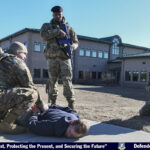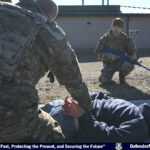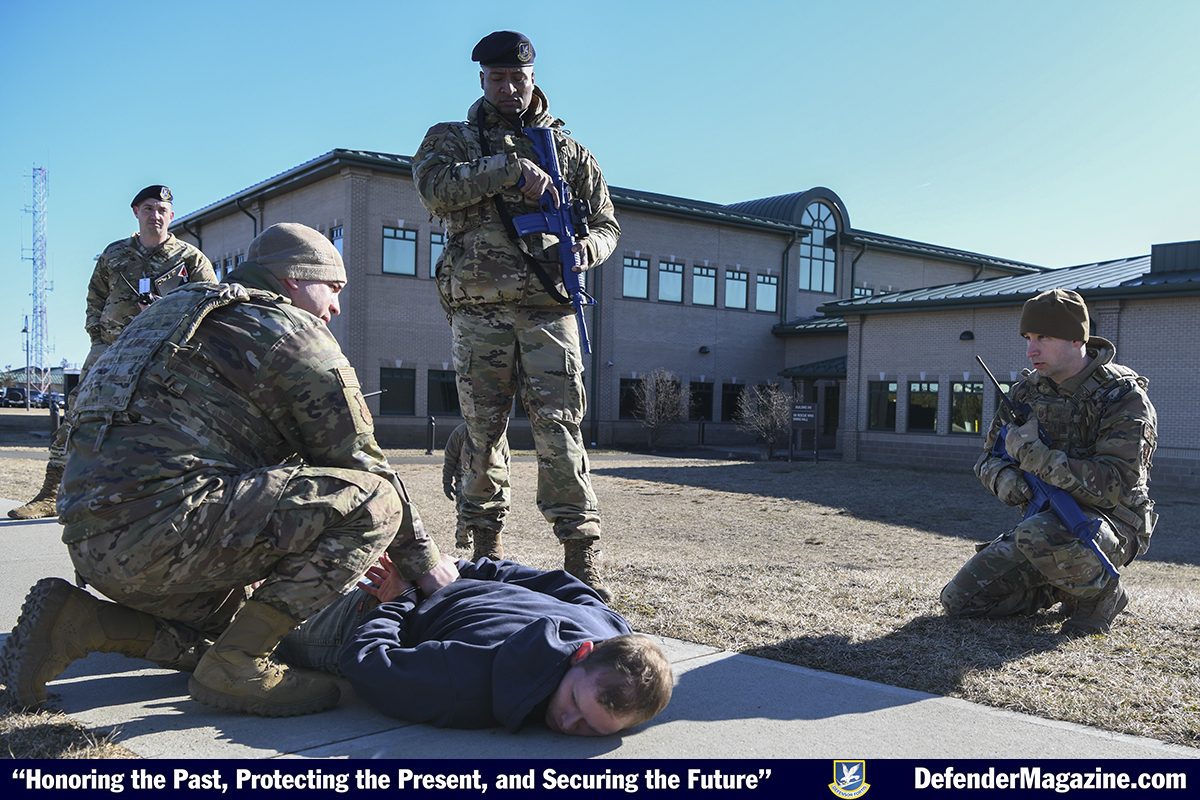F.S. Gabreski Air National Guard Base, Westhampton Beach, New York — A routine vehicle check at the front gate of F.S. Gabreski Air National Guard Base turned not routine fast on March 4, 2022, when the gate guards determined the driver was a person of interest by the Air Force Office of Special Investigations.
The gate guards asked him to step out of the vehicle, but the driver accelerated into the base. The sentries alerted the Base Defense Operations Center.
A vehicle barrier system, that serves as a backup to the gate, went up and the vehicle stopped as patrol units descended on the location.
Fortunately, this was only a training exercise conducted by 12 security force Airmen of the New York Air National Guard’s 106th Rescue Wing.
The drill is designed to prevent an “installation breach” and is something security forces personnel need to be good at, according to Staff Sgt. Noel Ruiz, a 106th Security Forces member.
The breach during the exercise was when the driver failed to stop at the main security check point, Ruiz explained.
The team stopped the car, the driver was ordered out of the vehicle and onto the ground where two Security Forces members conducted a search of the person and apprehended the driver.
For the 106th Security Forces Squadron Airmen, this was an opportunity to use their classroom training in a hands-on exercise, Ruiz said.
Just three days after the training exercise at Gabreski, security forces Airmen at Andrews Air Force Base outside Washington D.C. conducted a real-world operation just like the training event when an armed teenager went whizzing past a security checkpoint.
The 106th Security Forces Squadron has a wide range of responsibilities on base and while deployed, Ruiz said.
“Our main job as security forces professionals is to make sure our resources are protected as well as our members,” he explained. “We have the ability to provide security to convoys, distinguished personnel, assets such as aircraft and helicopters, and perimeter security, whether here at home or deployed.”
“Our members are learning all these different pieces in the classroom and through demonstrations, and then we put them all together in an exercise like this,” said SMSgt Christina Noon, 106th Security Forces Senior Enlisted Leader.
When their adrenaline is kicking in and different things are going on – that’s the optimal environment for our Airmen to learn what they’re supposed to be doing, Noon continued.
Good training is important to be ready for the real thing, Ruiz emphasized.
“Hands-on training is the only way to continue to refresh your skills and the understanding that this is a real job,” Ruiz said. “It’s not just, ‘Hey, how are you doing?’ at the gate,” he added. “Your Security Forces members can be friendly, but when it’s time to do their job, they’ll change mindsets very quickly.”
The 106th Security Forces Squadron will continue building on their training by incorporating outside law enforcement agencies, working dogs, the 106th Medical Group and working with the Pararescuemen from the wing’s 103rd Rescue Squadron, Noon said.
“We have to have a team that’s ready to deploy,” Noon said. “That means they need to be proficient in certain tasks specific to the security forces career field.”
“When the Air Force says, ‘We need a security forces team now,’ we are confident that our members can perform the job they’re tasked to do,” Noon emphasized.
The 106th Rescue Wing, based in F.S. Gabreski Air National Guard Base in Westhampton Beach, New York, operates and maintains the HC-130J Combat King II search and rescue aircraft, and the HH-60G Pave Hawk rescue helicopter. The 106th Rescue Wing is home to a special warfare squadron with pararescuemen and combat rescue officers, specializing in rescue and recovery, and deploys for domestic and overseas operations. Currently, the wing also supports statewide COVID-19 missions.
Published By Staff Sgt. Daniel H. Farrell



